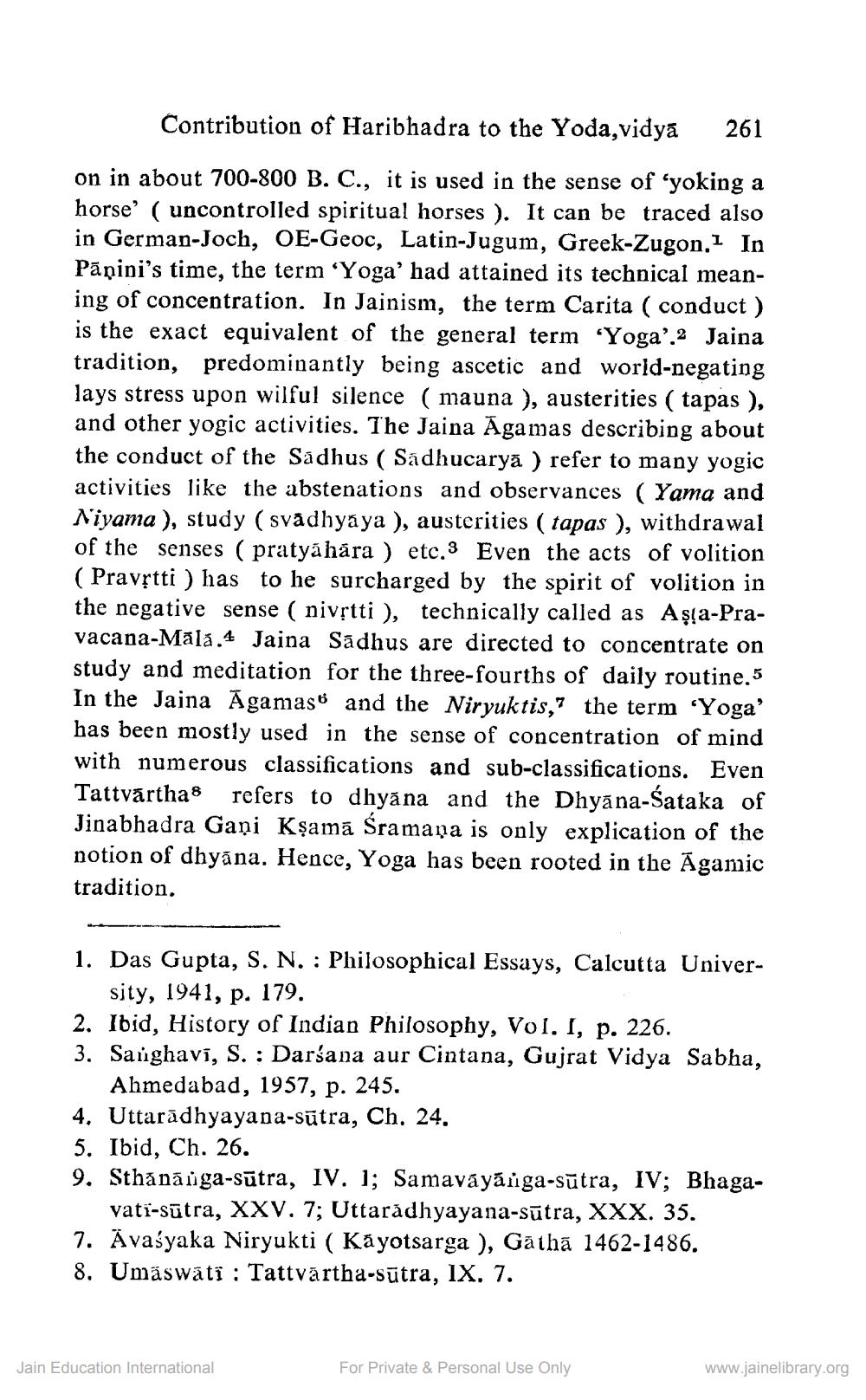________________
Contribution of Haribhadra to the Yoda, vidya
261
on in about 700-800 B. C., it is used in the sense of 'yoking a horse' ( uncontrolled spiritual horses ). It can be traced also in German-Joch, OE-Geoc, Latin-Jugum, Greek-Zugon.1 In Pāṇini's time, the term 'Yoga' had attained its technical meaning of concentration. In Jainism, the term Carita ( conduct ) is the exact equivalent of the general term 'Yoga'.2 Jaina tradition, predominantly being ascetic and world-negating lays stress upon wilful silence ( mauna ), austerities ( tapas ), and other yogic activities. The Jaina Āgamas describing about the conduct of the Sådhus ( Sadhucarya ) refer to many yogic activities like the abstenations and observances ( Yama and Niyama ), study (svadhyaya ), austerities (tapas ), withdrawal of the senses (pratyahára ) etc.3 Even the acts of volition ( Pravrtti ) has to he surcharged by the spirit of volition in the negative sense ( nivștti ), technically called as Aşa-Pravacana-Māla.4 Jaina Sadhus are directed to concentrate on study and meditation for the three-fourths of daily routine.5 In the Jaina Agamas and the Niryuktis, ? the term "Yoga' has been mostly used in the sense of concentration of mind with numerous classifications and sub-classifications. Even Tattvarthas refers to dhyāna and the Dhyāna-Sataka of Jinabhadra Gani Kşamá Śramaņa is only explication of the notion of dhyāna. Hence, Yoga has been rooted in the Āgamic tradition.
1. Das Gupta, S. N. : Philosophical Essays, Calcutta Univer
sity, 1941, p. 179. 2. Ibid, History of Indian Philosophy, Vol. I, p. 226. 3. Sanghavi, S.: Darśana aur Cintana, Gujrat Vidya Sabha,
Ahmedabad, 1957, p. 245. 4. Uttarādhyayana-sūtra, Ch. 24. 5. Ibid, Ch. 26. 9. Sthanā iga-sūtra, IV. 1; Samaváyáiga-sūtra, IV; Bhaga
vati-sūtra, XXV. 7; Uttaradhyayana-sūtra, XXX. 35. 7. Ävaśyaka Niryukti ( Kayotsarga ), Gātha 1462-1486. 8. Umāswātí : Tattvartha-sūtra, IX. 7.
Jain Education International
For Private & Personal Use Only
www.jainelibrary.org




